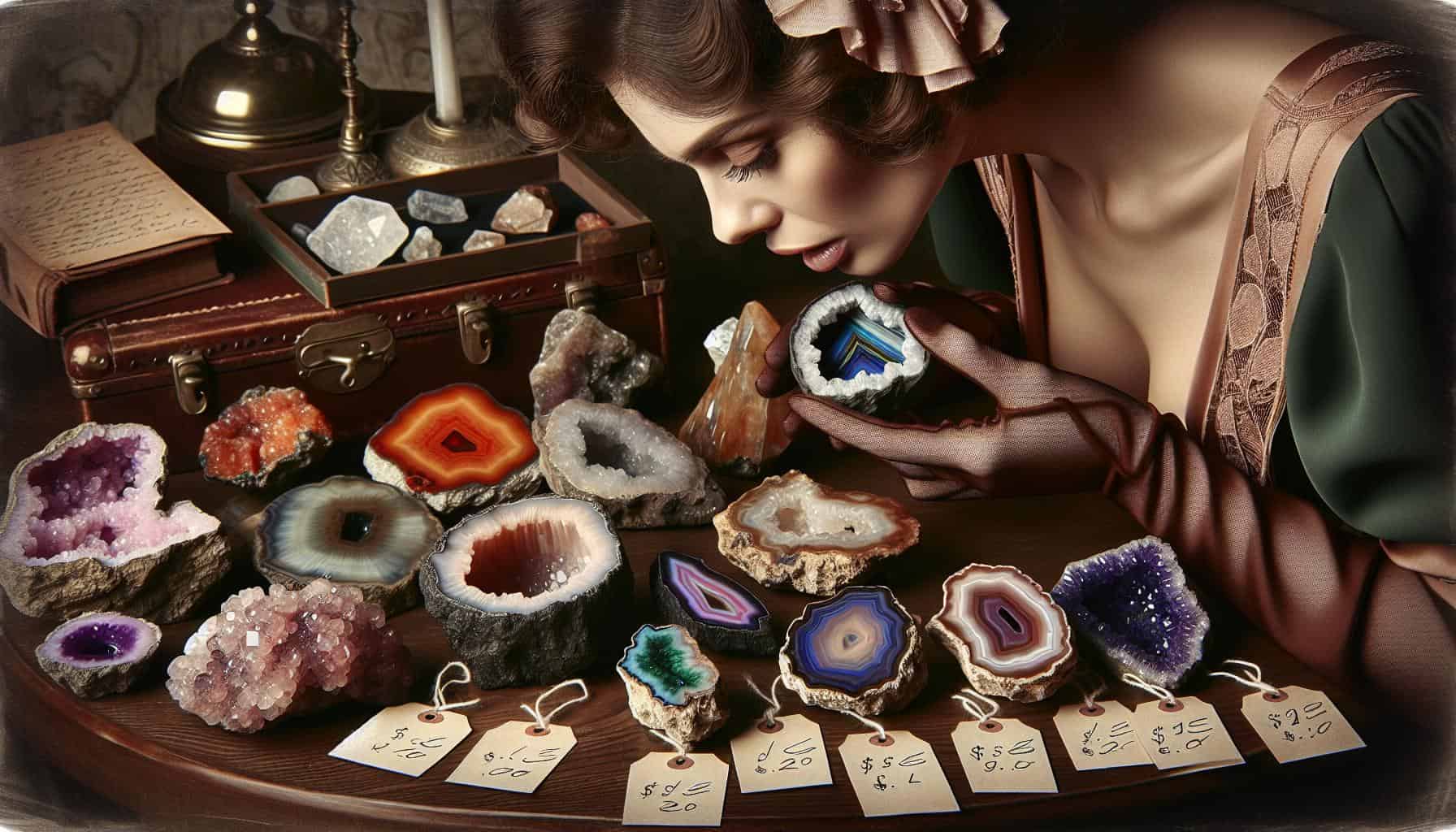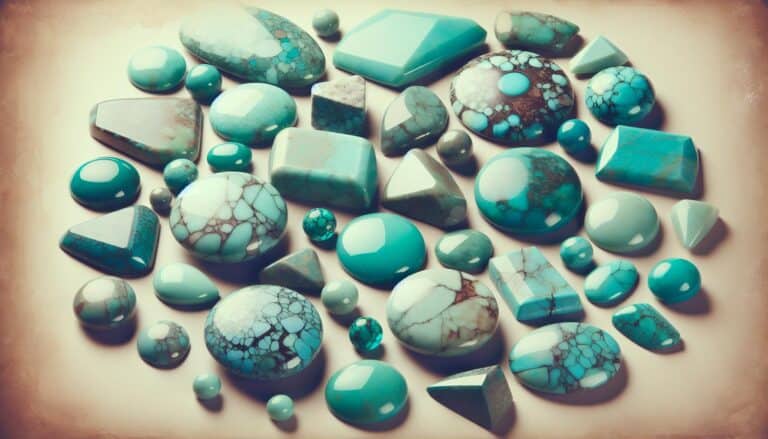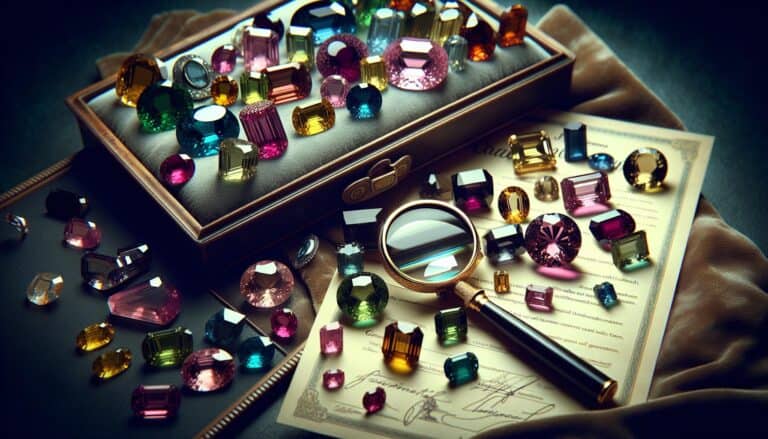Venturing into the world of rocks and minerals can be as thrilling as it is lucrative.
Whether you’re a seasoned collector or just starting out, understanding the nuances of buying and selling these natural treasures is key to your success.
You’ll find that each piece tells a story, from its geological formation to its journey into your collection. Grasping the market’s demand, knowing where to source quality specimens, and learning how to price them can turn your passion into profit.
Navigating the vibrant marketplace of rocks and minerals requires insight and strategy.
Get ready to explore the essentials of making smart purchases and sales that could enhance your collection and your wallet.
Buying and selling rocks and minerals combines passion with profit, focusing on market demand, quality sourcing, and strategic pricing. Key strategies include tracking trends, networking, and understanding each specimen’s story and value. Success hinges on balancing inventory quality, competitive pricing, and engaging storytelling.
Profit of Buying and Selling Rocks and Minerals
Venturing into the world of rocks and minerals can be as exhilarating as it is profitable. When you begin buying and selling these geological wonders, you’re not just trading pieces of earth; you’re sharing and acquiring slices of history. Each transaction holds the potential for substantial financial gains, especially when you identify undervalued items with high demand.
There’s a surge of satisfaction when you secure a valuable specimen below market value. Imagine procuring a vibrant, museum-quality amethyst geode at an estate sale for a fraction of its value and flipping it for a significant profit. It’s not just about the money; it’s about the expertise you gain with every acquisition and sale.
- Track trending gems and minerals
- Keep an eye on auction results
- Network with collectors and experts
Engaging with the market also demands research. Are labradorite pieces gaining popularity? What prices are commanding top dollar at gem shows? Understanding trends is crucial, as is building a robust network. Connections can lead you to private deals that often result in better purchases and sales than public auctions or online marketplaces.
Quality versus Quantity
Often, a single high-quality specimen can outweigh the value of numerous lesser pieces. It’s about finding the right balance in your inventory. Rare minerals, striking colors, and pristine conditions are marks of high-caliber specimens. Your focus should be on items that captivate enthusiasts and appeal to discerning collectors.
Strategic Pricing
Pricing your finds is a delicate art. Factor in your purchase cost, the current market value, and the rarity of the piece to optimize your pricing strategy. By pricing competitively, you attract buyers and ensure a swift turnover, fueling your business cycle.
Preparation is key in this field. Equipped with knowledge, an eye for quality, and strategic pricing tactics, you’re well on your way to experiencing both the thrill and the financial rewards within the dynamic marketplace of rocks and minerals.
The Stories Told by Rocks and Minerals
Every rock and mineral you come across carries a tale stretching back millions of years, waiting for someone like you to uncover its secrets. When you’re engrossed in the buying and selling of rocks and minerals, you’re not just trading mere objects. You’re trading history. Piecing together the stories they tell is part of the allure that captivates both buyers and sellers alike.
Consider the characteristics of each specimen: its color, texture, and formation all provide clues. For instance, the banded patterns in agates can recount ancient volcanic activity, while fossils embedded within rocks relay tales of life long extinct and environments that no longer exist. As you delve into the narratives each piece holds, your expertise grows, along with your potential to spot undervalued gems or sell your finds at a premium.
Knowledge of provenance heightens a rock or mineral’s appeal and value in the market. A specimen’s origins, from the depths of a famous mine or a region known for its unique geology, can make it particularly coveted. Savvy collectors seek out these pieces not just as investments but as links to distant places and eras.
Among enthusiasts, sharing the stories behind their collections becomes a way to connect. Networking with fellow collectors fuels the passion and drives the market. When you recount how a rare mineral from a defunct mine found its way into your hands, you’re not only showcasing a piece of the Earth’s history; you’re adding to the rich tapestry that is the hobby of collecting rocks and minerals. The excitement this generates can boost demand and propel sales to new heights.
Understanding the historical significance of the pieces you buy and sell does more than add depth to your collection—it gives you an edge in the marketplace..LEADING ITEMS: Being a storyteller can set you apart and create lasting impressions that resonate with buyers, who often prize the narrative as much as the rock or mineral itself.
Market Demand for Rocks and Minerals
Grasping the nuances of market demand is crucial when you’re looking to buy or sell rocks and minerals. Demand can fluctuate wildly based on a multitude of factors—from fashion trends to technological advances. For instance, quartz, widely used in electronics, often sees a spike in demand as new gadgets hit the market.
When exploring the market, it’s imperative to focus on rarity and quality. These attributes typically drive a higher demand:
- Unique color variations
- Exceptional crystal formations
- Untouched, natural specimens
Stay informed on emerging trends by frequenting trade shows, joining forums, and following industry leaders on social media. Here, you’ll get a pulse on what’s popular and what novel applications might be driving interest.
Furthermore, it’s important to recognize the role of ethical sourcing in today’s market. With a growing number of collectors placing a premium on sustainably sourced minerals, positioning your offerings accordingly could pay dividends. This shift not only impacts demand but also the reputation of sellers within the community.
Educating buyers on the origin, historical significance, and practical applications of your specimens can drive interest and sales. Remember, your role as a storyteller aligns with market trends that favor well-documented and richly storied pieces.
Keep track of prices and transaction volumes for certain rocks and minerals. Pricing databases and auction results can be highly informative. Yet, it’s also wise to maintain flexibility, as the market can pivot unexpectedly, making adaptability a key to success.
Leveraging these insights allows you to better predict which rocks and minerals are likely to sell quickly and at a premium. Whether you’re a seasoned collector or new to the field, a deep understanding of market demand is invaluable for buying and selling effectively.
Sourcing Quality Specimens: Where to Look
Finding top-tier rocks and minerals demands a keen eye and knowledge of where to scout for the best specimens. Your journey begins with local rock shops and mineral shows, which often provide access to a broad array of high-quality pieces. These venues allow you to inspect each item firsthand, ensuring you assess the quality accurately.
Online marketplaces have burgeoned in popularity, providing a vast platform for buying and selling minerals. Websites dedicated to rock hounding and mineralogy feature user reviews and ratings that can guide your choices. When shopping online, it’s crucial to verify the seller’s reputation and look for clear, detailed photographs that do justice to the specimen’s true condition.
Mining your network for connections can also lead to premium finds. Connect with local rock hounding clubs and geological societies, where members often trade or sell specimens. Belonging to these communities keeps you in the loop for private sales and less-advertised finds that could be the cornerstone of your collection.
For those seeking the thrill of discovery, direct field collecting is an adventurous option. Research the most fruitful locations for the types of minerals you’re interested in, and ensure you have the necessary permissions to collect. When you unearth rocks and minerals yourself, you’re not just acquiring a specimen; you’re gaining a story that enhances its value.
Exploring estate sales and auctions can sometimes yield unexpected treasures. Sellers might not always recognize the value of what they possess, offering you a chance to acquire high-quality specimens at lower costs. Keep an eye out for these opportunities, but approach with a discerning attitude to ensure you’re making a worthy investment.
Remember, quality is king in the world of rocks and minerals. Prioritize the integrity and rarity of specimens over quantity. With patience and persistence, your collection will reflect your dedication to sourcing only the finest specimens.
The Art of Pricing Rocks and Minerals
Pricing rocks and minerals is both an art and a science where keen understanding and experience play critical roles. When you’re determining prices, consider factors such as rarity, size, quality, and the overall aesthetic of the item. It’s also imperative to account for the origin of the specimen and any historical significance it may hold.
To start, research the current market to gauge how similar items are priced. Keep in mind that prices can fluctuate based on recent finds and what’s currently en vogue in the world of mineralogy. Resources like mineral databases, auction results, and industry publications can provide invaluable insights.
Here’s how you might break down the pricing factors:
- Rarity: How often does the specimen occur in nature?
- Size and Quality: Bigger and clearer specimens generally fetch higher prices.
- Origin: Provenance can greatly increase a mineral’s value.
- Demand: Track which rocks and minerals are currently sought after.
Remember, pricing is also influenced by the specimen’s condition. Any chipping or damage will reduce its appeal and thus its price. Conversely, well-preserved pieces can command premium prices.
Furthermore, it’s beneficial to understand the psychological aspect of pricing. Strategic pricing, such as setting a price slightly below a round number, can make items more attractive to buyers. For instance, pricing a mineral at $99 rather than $100 can significantly affect buyer perception.
Be sure to also consider the cost of acquisition and any restoration or preparation work that has gone into the specimen. This includes the time and resources spent on cleaning and presenting the mineral for sale. You’ll want to recover these costs, so factor them into your final pricing strategy.
As you continue to buy and sell, you’ll refine your strategy. Keep detailed records of your sales and continuously adjust your prices based on success rates. Networking with other enthusiasts and attending trade events will help sharpen your pricing acumen, ensuring you stay competitive in the market.
Navigating the Vibrant Marketplace of Rocks and Minerals
Embarking on the journey through the dynamic market of rocks and minerals is like entering a treasure hunt, where each stone may hold a unique story or value. Knowing where to look is key. Start by exploring local rock shops, trade shows, and online marketplaces for a diverse selection. Remember, the value of a specimen is largely influenced by market trends and buyer interests.
When you’re buying, education is your best tool. Brush up on the latest news in geology and mineralogy. Join forums or social media groups where collectors and experts gather to discuss new finds and offer insights. Subscribing to magazines or online publications dedicated to rockhounding can keep you updated on the market pulse.
Now let’s talk sales. Visibility and presentation are paramount. If you’re selling online, high-quality photographs and detailed descriptions can make your listing stand out. In person, presenting your minerals at eye level with appropriate lighting can significantly enhance their appeal.
Here’s a quick checklist for effective sales preparation:
- Ensure each piece is clean and well-presented.
- Provide proper documentation, such as origin and any restorative work done.
- Set competitive prices by staying informed about recent sales and market conditions.
When partaking in transactions, trust and reputation are commodities just as valuable as the specimens you’re buying or selling. Building a good rapport with your peers can lead to repeat business and positive referrals. Be transparent, fair, and courteous in all your dealings.
The market for rocks and minerals is an ever-evolving space fueled by passion and commerce. As you become more integrated into this community, you’ll find that your knowledge, network, and inventory grow alongside your reputation. Remember, each mineral has its story and each transaction is part of your own journey in this vibrant marketplace.
Conclusion on Making Money With Rocks
Diving into the world of rock and mineral trading is both a passion and a pursuit that requires diligence and savvy.
You’ve got the tools to make informed decisions, from understanding market dynamics to presenting your specimens in the best light. Remember, it’s not just about the stones—it’s about the stories they tell and the connections you make. Stay curious, keep learning, and let your collection reflect both your knowledge and your enthusiasm.
Whether you’re buying your first piece or selling a prized specimen, you’re part of a community that values the natural beauty beneath our feet.
Happy trading!




![Wisconsin Rockhounding Sites in [year]: Spots and Treasures](https://observationhobbies.com/wp-content/uploads/2024/01/HRM33Fq_qxKfYCz7n-nqs-768x439.jpg)

![Delaware Rockhounding Sites in [year]: Location & Hidden Gems](https://observationhobbies.com/wp-content/uploads/2024/01/OlSBM_jZS8pYfIDXCzqu-768x439.jpg)
![Florida Rockhounding Sites in [year]: Basalt to Coral](https://observationhobbies.com/wp-content/uploads/2024/01/4hqOrGZcaIuK7n2K2N9d0-768x439.jpg)